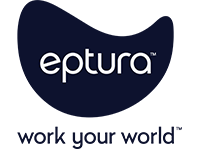
Many organizations continue to invest in multiple standalone workplace technology solutions, often overlooking the costs associated with fragmented systems, including operational inefficiencies, increased overhead, and significant resource demands. In fact, 37% of businesses rely on 11 or more employees solely to collate, analyze, and report on data, according to the 2025 Workplace Index.
Facility and workplace leaders need to be able to articulate and illustrate the value of an integrated platform, starting with a robust return on investment (ROI) model.
Key takeaways
- Developing a comprehensive ROI model in a multistep process: It should include quantitative metrics, qualitative impacts, time-based analysis, and risk and sensitivity analysis to help stakeholders understand the full scope of the investment’s value
- A effective model aligns the investment in integrated workplace technology with broader organizational goals: It is important to show how the solution supports initiatives like digital transformation, workforce agility, and risk mitigation
- Key performance indicators (KPIs) must be relevant across multiple departments and are clear, measurable, and data-driven: KPIs can include occupancy rate improvements, reduction in energy consumption, employee productivity metrics, and maintenance cost savings
Although facility and workplace leaders can see the value of integrated solutions, the challenge often lies in helping other stakeholders across the organization see that value, too. Budget constraints are a major barrier, with 33% of respondents in the report citing limited funding as a key issue, while 23% of buildings and facilities managers also report that others in their organization struggle to perceive the benefits of integration, making it harder to justify the investment.
Concerns about implementation disruption and the difficulty of demonstrating a clear return on investment without concrete data further complicate the conversation.
There is a clear need, then, for developing robust ROI models that communicate the financial and operational benefits of integrated workplace technology. A well-constructed ROI model can help you build consensus by quantifying cost savings, efficiency gains, risk mitigation, and alignment with broader organizational goals.
What is an ROI model?
An ROI model is a structured framework that evaluates the financial and strategic value of an investment.
A useful model goes beyond simple profit calculations and includes:
- Quantitative metrics: Revenue, budget, and productivity improvements
- Qualitative impacts: Employee satisfaction, customer experience, brand reputation
- Time-based analysis: Short-term and long-term results and returns
- Risk and sensitivity analysis: effects of changes in outcome assumption
An effective ROI model is credible, comprehensive, and tailored to the decision-makers’ priorities. It helps leaders make informed choices and confidently allocate resources by speaking to them in ways they understand and appealing to their priorities and goals.
Define goals that support strategic priorities across the enterprise
Think beyond your immediate team and consider how the investment supports shared goals across departments. Whether you’re aiming to reduce operational costs, improve space utilization, enhance the employee experience, or advance sustainability targets, it’s important to frame the solution in terms of cross-functional value. People want to hear how your project is going to help them solve their challenges.
To strengthen your model, incorporate the perspectives and priorities of other departments to ensure your proposal resonates across the organization and builds support across department, for example including:
- Human resources: Focus on how the solution improves employee experience, supports hybrid work strategies, and contributes to talent retention
- Financial operations: Highlight cost savings, operational efficiencies, and long-term value, including reduced overhead and better resource allocation
- IT teams: Emphasize system integration, data security, scalability, and reduced complexity in managing workplace technologies
- Executive leadership: Align with strategic initiatives like digital transformation, workforce agility, and risk mitigation
So, instead of simply proposing a software upgrade, you can talk about, “Implementing a smart workplace platform to reduce energy costs by 15 percent and improve space utilization by 20 percent.” Your goal is to tie the investment to measurable outcomes that matter across the organization, making your case not just relevant but strategic.
Identify key performance indicators (KPIs)
Once you’ve aligned your ROI model with strategic and cross-functional goals, the next step is to identify the key performance indicators (KPIs) that will demonstrate the investment’s value. KPIs should be clear, relevant to objectives, and grounded in data you can reliably track over time. The goal is to select metrics that reflect both operational improvements and broader organizational impact, helping stakeholders see the tangible outcomes of the proposed solution.
There are many possible KPIs you can use in an effective ROI model, including:
- Occupancy rate improvements: Measure how effectively space is being used, for example, increasing average occupancy from 60% to 80% over a defined period
- Reduction in energy consumption: Track decreases in energy usage or utility costs, for example, achieving a 15% reduction in electricity consumption within the first year
- Employee productivity metrics: Use survey data, collaboration tool analytics, or performance benchmarks to show improvements in focus, engagement, or output
- Maintenance cost savings: Quantify reductions in reactive maintenance, downtime, or service calls, such as cutting annual maintenance expenses by 20% through proactive monitoring
Choosing the right KPIs helps you build a model that is both credible and actionable. It also ensures that your proposal speaks to the priorities of multiple departments, reinforcing the case for investment across the organization.
Calculate total cost of ownership (TCO)
A complete ROI model accounts for the full range of costs associated with implementing an integrated workplace solution, including upfront investments and ongoing expenses. Being thorough and transparent about these costs helps build credibility with stakeholders and ensures your model reflects the true financial picture.
Start by considering the software and hardware costs. These might include licensing fees, subscription plans, and any physical infrastructure required to support the system like sensors or workplace devices. Next, factor in implementation and training. Make sure your calculations cover the time and resources needed to configure the system and onboard users. Often, this phase involves vendor support, internal coordination, and dedicated training sessions, all of which involve investment.
By presenting a clear and comprehensive view of the investment, you make it easier for decision-makers to weigh the costs against the expected benefits.
Define tangible and intangible benefits
Tangible benefits are those you can quantify directly, including cost savings, productivity gains, and efficiency improvements. These are often the numbers that business cases tend to highlight. For example, automating HVAC controls might result in $200,000 in annual energy savings, while optimizing space and workflows could lead to a 10 percent increase in employee productivity. These figures are powerful because they translate directly into financial impact, making them especially compelling to finance teams and executive leadership.
However, intangible benefits are just as important, even if they’re harder to measure. These include improvements in employee satisfaction, stronger workplace culture, and enhanced brand perception. While they may not show up immediately on a balance sheet, they influence long-term outcomes like talent retention, customer loyalty, and organizational resilience. Tools like employee engagement surveys or Net Promoter Score (NPS) can help organizations quantify these softer metrics and give you a way to track progress over time.
As you build your ROI model, think in terms of both types of benefits across departments. For example, a solution that reduces maintenance costs also improves the employee experience by minimizing disruptions. By weaving together these perspectives, you can create a more holistic and persuasive case that speaks to the full value of the investment, not just the bottom line.
Apply financial metrics to quantify ROI
Once you’ve outlined goals, KPIs, and costs, it’s time to apply financial metrics that help quantify the benefits.
ROI is one of the most widely used metrics. It measures the efficiency of an investment by comparing net benefits to total costs.
The formula is simple: ROI = (Net Benefits / Total Costs) × 100
For example, if a CRM system generates $500,000 in benefits and costs $200,000, the ROI would be 150 percent, which means the investment returns one and a half times its cost.
Payback period tells you how long it takes to recover the initial investment. You divide total costs by annual net benefits. If your system costs $200,000 and generates $100,000 in net benefits each year, the payback period is two years. Payback period is helpful for assessing risk and liquidity, and a shorter payback period is generally more attractive to stakeholders.
Net present value (NPV) goes a step further by accounting for the time value of money. It calculates the present value of future cash flows and subtracts the initial investment. A positive NPV means the investment is expected to generate more value than it costs, while a negative NPV suggests a loss. NPV is especially useful for long-term projects or solutions with benefits that accumulate over time.
To apply these metrics accurately, you’ll likely need to work with other teams to gather the necessary data. Not all of it will come from the facilities or workplace departments. Productivity metrics might come from HR, energy savings from sustainability teams, and revenue impact from sales or finance.
Present a strategic business case that drives buy-in
A strong business case is a structured, persuasive argument that explains why the investment matters, how it aligns with organizational priorities, and what outcomes it will deliver. It should clearly connect the proposed solution to broader business goals such as operational efficiency, risk reduction, employee experience, and long-term growth.
To make your case resonate, frame the investment as a business enabler rather than a technical upgrade. Focus on the outcomes that matter most to leadership, including cost savings, improved agility, reduced risk exposure, and the ability to scale or adapt in a changing business environment. Actively shift the conversation away from specific features and functions to strategic impact.
When presenting to the C-suite, avoid jargon and emphasize how the solution supports enterprise-wide goals. Use data to back up your claims, but don’t overwhelm—highlight the metrics that matter most to each stakeholder. For example, a CFO may care about payback period and cost avoidance, while a CHRO may be more interested in employee engagement and retention. Tailor your message to reflect these priorities.
Turning ROI into action
By aligning with enterprise goals, incorporating cross-functional data, and presenting clear financial metrics, you position your ROI model as a roadmap for progress.
To be effective, your business case should reflect both the measurable outcomes and the broader strategic value of the investment. Use it to show how the solution supports operational efficiency, improves employee experience, and enables long-term growth. The more clearly connect the investment and the organization’s goals, the more compelling your case becomes.









